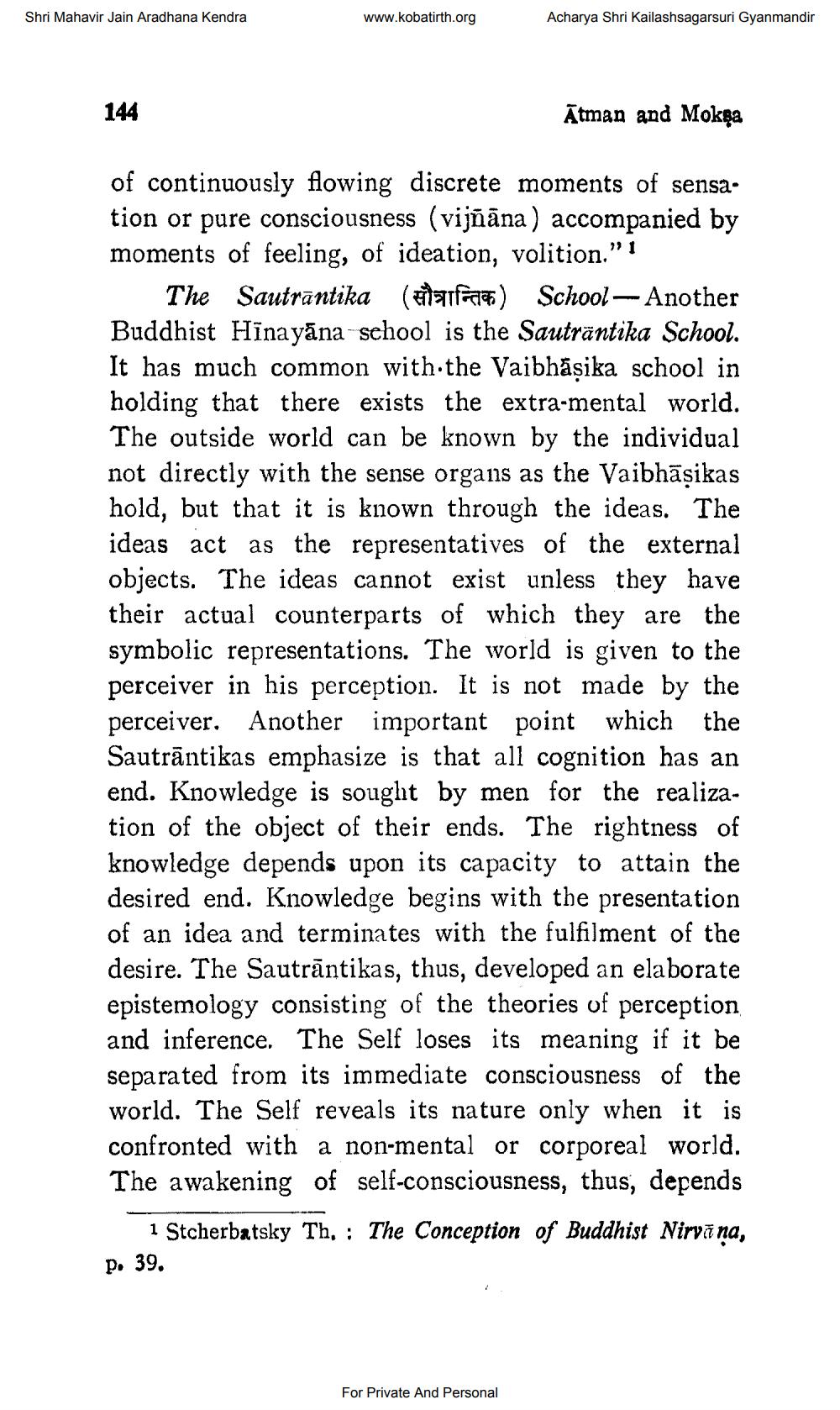________________
Shri Mahavir Jain Aradhana Kendra
www.kobatirth.org
Acharya Shri Kailashsagarsuri Gyanmandir
144
Atman and Mokpa
of continuously flowing discrete moments of sensa. tion or pure consciousness (vijñāna) accompanied by moments of feeling, of ideation, volition."!
The Sautrāntika (Dari14) School - Another Buddhist Hīnayāna sehool is the Şautrantika School. It has much common with the Vaibhāṣika school in holding that there exists the extra-mental world. The outside world can be known by the individual not directly with the sense organs as the Vaibhāşikas hold, but that it is known through the ideas. The ideas act as the representatives of the external objects. The ideas cannot exist unless they have their actual counterparts of which they are the symbolic representations. The world is given to the perceiver in his perception. It is not made by the perceiver. Another important point which the Sautrāntikas emphasize is that all cognition has an end. Knowledge is sought by men for the realization of the object of their ends. The rightness of knowledge depends upon its capacity to attain the desired end. Knowledge begins with the presentation of an idea and terminates with the fulfilment of the desire. The Sautrāntikas, thus, developed an elaborate epistemology consisting of the theories of perception and inference. The Self loses its meaning if it be separated from its immediate consciousness of the world. The Self reveals its nature only when it is confronted with a non-mental or corporeal world. The awakening of self-consciousness, thus, depends
1 Stcherbatsky Th. : The Conception of Buddhist Nirvāna, P. 39.
For Private And Personal




